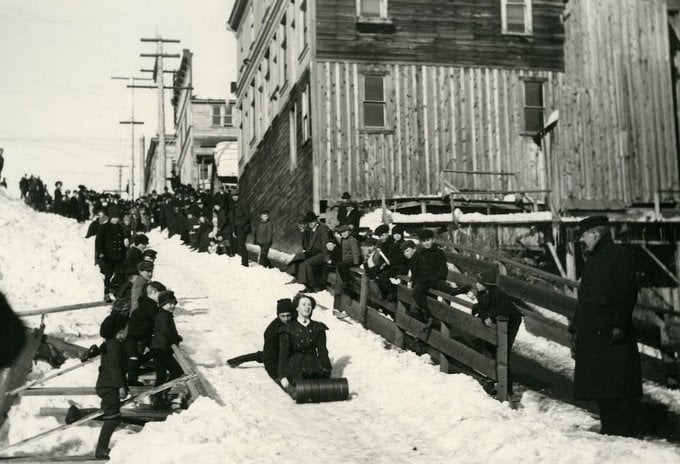#774 Golden City yarns
Chicanery, Civility & Celebrations: Tales of Early Rossland
by Ron Shearer
Rossland: Rossland Heritage Commission, 2019
$24.95 / 9780228502852
Reviewed by Ron Verzuh
*
 Golden City Yarns: A Tireless Researcher Digs Out a B.C. Mining Mecca’s Raucous Past, by Ron Verzuh
Golden City Yarns: A Tireless Researcher Digs Out a B.C. Mining Mecca’s Raucous Past, by Ron Verzuh
Kootenay history buffs have long savoured the storytelling talents of Ron Shearer, a retired UBC economics professor turned amateur historian. Now, in a randomly presented selection of stories, he takes us back to the mining town of Rossland in its heyday. And deliciously intriguing stories they are.
Travelling back to the 1890s and early 20th century with Shearer as our guide makes for a joyous and eventful voyage. In short, readable vignettes, he returns to the pioneer times of his hometown using a cast of characters that rivals the celebrated TV series Deadwood.
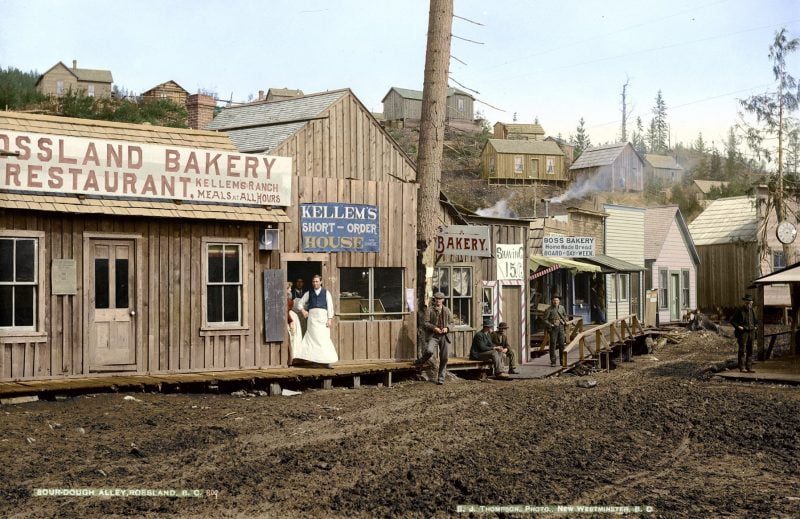

Like all good storytellers, he keeps us guessing as we learn what life was like in this sometimes-wild mining camp, soon to be nicknamed “Golden City,” with its drunken brawls, a red light district called the “tenderloin,” and the occasional shooting. First we meet Ross Thompson, the itinerant prospector that gave the town its name. Shearer tells of Thompson being shot over a stolen sewing machine. He survived to become “The Father of Rossland.”
Next up is Jack Kirkup, the town’s first lawman. At six foot five he could have been the model for Matt Dillon of the famed Gunsmoke TV show. Kirkup banished “vagrants and troublemakers” with his “intimidation, persuasion, and diversion” tactics (pp. 19-20). After Kirkup came John Ingram, Rossland’s first police chief. Unlike the puritanical Kirkup, though, he was a man of “bad temper and bad behaviour” who “would not back down from a fight, just the type of person needed to keep the potentially rowdy element under control” (p. 92).
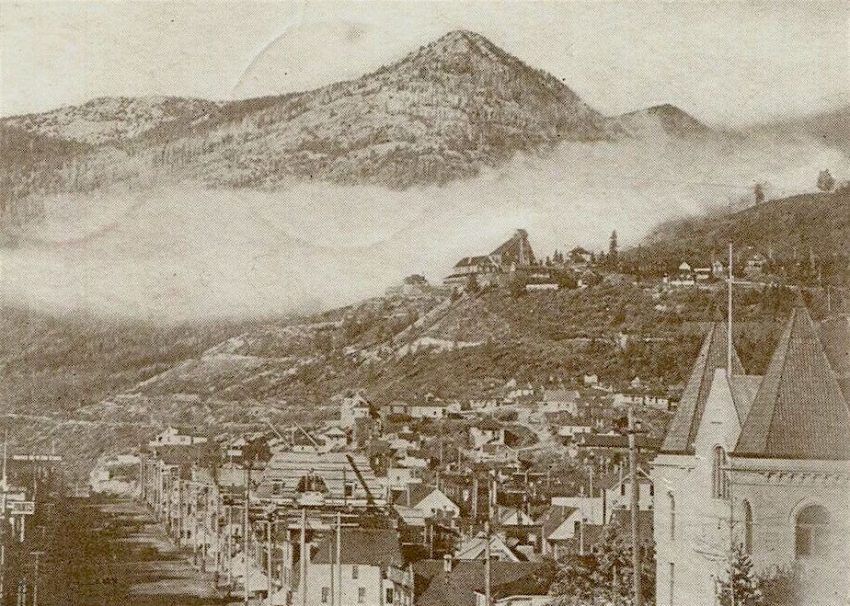
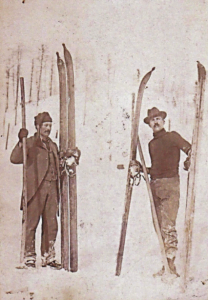
Ingram and Robert Scott, the city’s first mayor, wanted “some latitude” in enforcing the city’s gambling and liquor laws. “A mining town full of unattached, lonely men, working long hours and living in spartan accommodations,” they reasoned, “needed congenial places for recreation in their non-working hours” (p. 90).
We also meet local skiing legend Olaf (Olaus) Jeldness who, without knowing it, breathed new life into Rossland as a popular ski resort, a status it maintains today. City council meetings dealt with the water, sewer, light, housing, and transportation problems of a boomtown trying hard to become a respectable destination for fortune seekers and fortune makers, men like copper king F. Augustus Heinze and railway magnate Daniel C. Corbin.
Local churches, the town’s first schoolteacher, board of trade, stock exchange, fire department (fire was a constant threat in pioneer Rossland), and the beloved Winter Carnival are covered in this hodgepodge of fascinating snippets. Into the mix came the 1901 miners’ strike, the flourishing prostitution trade, and nativist rejection of the Chinese community. (Shearer has written elsewhere about the treatment of Chinese immigrants and their struggle to subsist amidst constant racial slurs.)

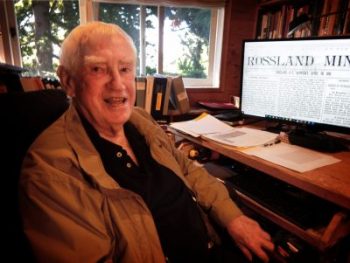
Chronicling it all was the Rossland Miner, first issued on March 2, 1895, and here Shearer has provided only a taste of the delicious gossip to be found among news of ore strikes, smelter startups, and the latest scandals at city hall. As he notes, the weekly (later a daily) was “entangled in the conflicting economic interests of the day” (p. 45). Again, Shearer has elsewhere detailed Rossland’s pioneer newspaper publishers, especially the socialist Miner editor David Blythe Bogle, the roving reporter-for-hire Patrick A. O’Farrell, and the peripatetic Eber C. Smith, founder of Rossland’s Evening Record.

The local impact of the 1918 Spanish flu epidemic, the closure of the mines, and coping with the war years are briefly documented, and as we move into the later years of the last century Shearer, at 88, is able to inject some personal history into his carefully researched yarns.
His account of learning to drive on the treacherous Cascade Highway, for example, brought back my own memories of driving on that treacherous stretch of road. His youthful memory of skiing Red Mountain, Rossland’s world-class peak, also recalled my dad’s early role as a member of the ski patrol.
Despite the plethora of items above, there is much in this thin volume that I have not mentioned. Perhaps I wanted to avoid being called a spoiler. For Rosslanders and all of us from small-town B.C. these are discoveries and rediscoveries to cherish about our exciting past, all delivered with honesty, caring, and good humour. The reader is simply left wanting more.

*
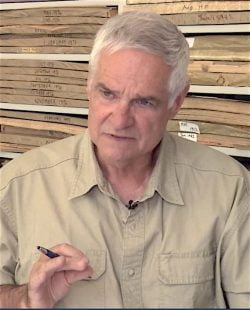
A writer, historian, and documentary filmmaker, Ron Verzuh is also retired national communications director for the Canadian Union of Public Employees. His books include Radical Rag: The Pioneer Labour Press in Canada (Steel Rail Publishing, 1988), several monographs, and numerous articles on subjects ranging from trade unionism and politics to travel, literature, news media, film, and food. Originally from Castlegar, he now lives in rural Oregon where he is preparing his recent PhD from Simon Fraser University in BC labour and industrial history for publication.
*
The Ormsby Review. More Books. More Reviews. More Often.
Publisher and Editor: Richard Mackie
The Ormsby Review is a journal service for in-depth coverage of B.C. books and authors. The Advisory Board consists of Jean Barman, Robin Fisher, Cole Harris, Wade Davis, Hugh Johnston, Patricia Roy, David Stouck, and Graeme Wynn. Scholarly Patron: SFU Graduate Liberal Studies. Honorary Patron: Yosef Wosk. Provincial Government Patron since September 2018: Creative BC
“Only connect.” – E.M. Forster
